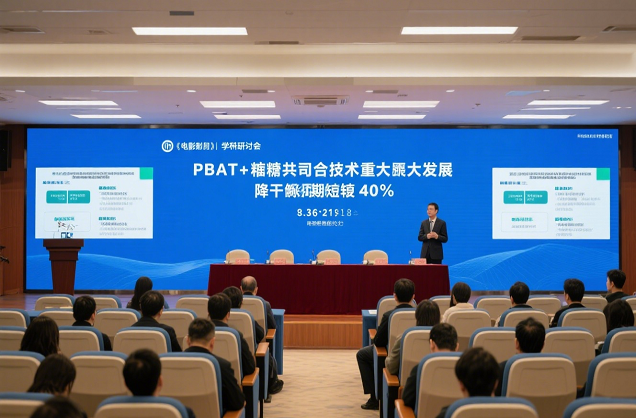What is the difference between biodegradable vs compostable?
Why do you need to know the difference?
In the environmentally conscious year of 2024, “Biodegradable” and “Compostable” are the most commonly confused terms. Global search data shows that:
1. "Difference between biodegradable and compostable" searches grew 410% annually
2.68% of consumers have failed to compost due to misclassification
3. New EU regulations require all packaging to be clearly labeled with the type of degradation from 2025 onwards.

Chapter 1 Basic definitions: comparison of scientific standards
1.1 Biodegradable
✅ Definition: substances that can be decomposed by microorganisms in the natural environment
✅ Decomposition conditions:
Time: from a few months to hundreds of years (depending on the material and the environment)
Environment: soil, seawater, landfill, etc.
✅ Examples of certified standards:
ASTM D6400 (U.S.A.)
EN 13432 ( EN 13432 (EU standard for industrial composting)
⚠️ Key issues:
No time limit for decomposition (plastic bags may be labeled as "biodegradable" but take up to 500 years)
Possible residues of micro-plastics or toxic substances
1.2 Compostable
✅ Definition: can be fully converted to carbon dioxide, water and organic fertilizer under specific composting conditions
✅ Decomposition conditions:
Time: home composting (6-12 months) / industrial composting (3-6 months) -6 months)
Must meet: temperature (58-70°C), humidity, microbiological environment
✅ Examples of certification standards:
OK Compost HOME (home composting)
BPI certified (USA)
⚠️ Key advantages:
100% conversion to beneficial compost
Strict time limits (cannot be certified without meeting standards)
Chapter 2 Core Differences: 5 Dimensions of Comparison
Dimensions of Comparison Biodegradable Compostable
Decomposition time No strict limit Home composting ≤ 12 months
End product Possible residual microplastics CO₂+water+organic fertilizer only
Required environment Natural conditions are sufficient Specific temperature and humidity are required
International certificates Less mandatory certificates Laboratory testing is required
Typical products Partial plastic bags, PET bottles Corn starch tableware, coffee capsules

Chapter 3: The 3 Pitfalls Consumers are Most Likely to Step into
3.1 Myth 1: "Biodegradable = Can be Thrown in the Home Compost Bin"
? Case: A Brand of "Biodegradable" Take-Out Boxes Hasn't Broken Down in 6 Months
? The Truth:
Industrial composting materials (e.g., PLA) barely break down in home composting
Must recognize the "OK Compost HOME" logo!
3.2 Myth #2: "Ocean degradable products are environmentally friendly"
? Case: A "seawater degradable" plastic bag still kills sea turtles
? Truth:
Ocean degradation takes years and harms organisms in the meantime
Truly environmentally friendly choice: land-based composting materials
3.3 Myth #3: "All plant-based materials are compostable"
? Case: PLA-coated "paper cups" contaminate compost
? Truth:
Mixed materials require special handling
Check the list of ingredients (100% plant fiber is safest)

Chapter 4: Practical Buying Guide 2024
4.1 Preferred scenarios for compostable products
Home composting system users
Need for rapid degradation (e.g. food packaging)
Pursuing zero microplastic residue
4.2 Reasonable use scenarios for biodegradable products
Areas with no composting facilities
Durable goods for non-short-term use
Areas with well-established industrial recycling systems
4.3 A glance at the real and fake eco-products
✅ The real eco-products:
Clearly labeled with certification standards (e.g. EN13432)
Indicate "home composting" or "industrial composting"
❌ Pseudo-environmentally friendly:
Labeled as "biodegradable" without specific standards
Use green washing packaging design

Chapter 5 Global Policies and Future Trends
5.1 Latest Regulations by Country
EU: Uncertified "biodegradable" labels will be banned from 2025
California: BPI certification required for compostable products
China: GB/T 38082-2019 standard implemented
5.2 Market Data Insights
Compostable Packaging Market Growing at 24.5% CAGR (Grand View Research Data)
2024 e-commerce hot search term: “home compostable” searches outnumber “biodegradable”
 Significant progress in PBAT/s
Significant progress in PBAT/s
 PLA/PBAT composite film degrad
PLA/PBAT composite film degrad
 A New Choice for Takeaway Pack
A New Choice for Takeaway Pack
 Significant progress in PBAT+s
Significant progress in PBAT+s
CONTACT
Add: Room 4006, No.1 Helong Yiheng Road, Baiyun District, Guangzhou City
Tel: +8613450255948
Wechat : +86-13450255948
Fax: +86-13450255948
E-mail: 13450255948@163.com








